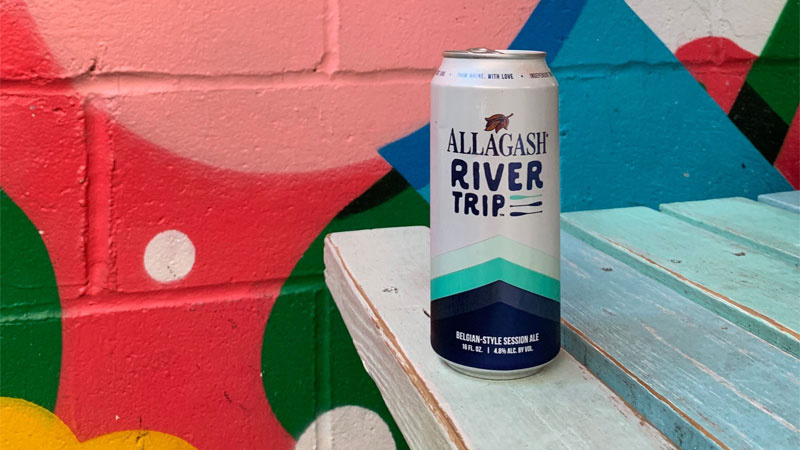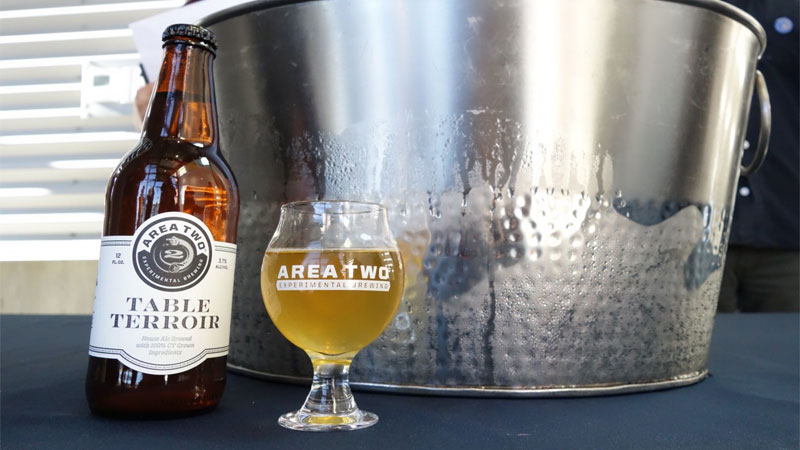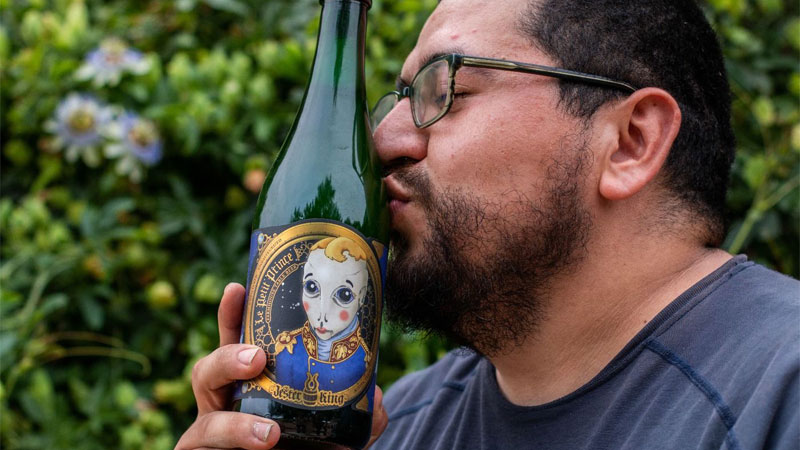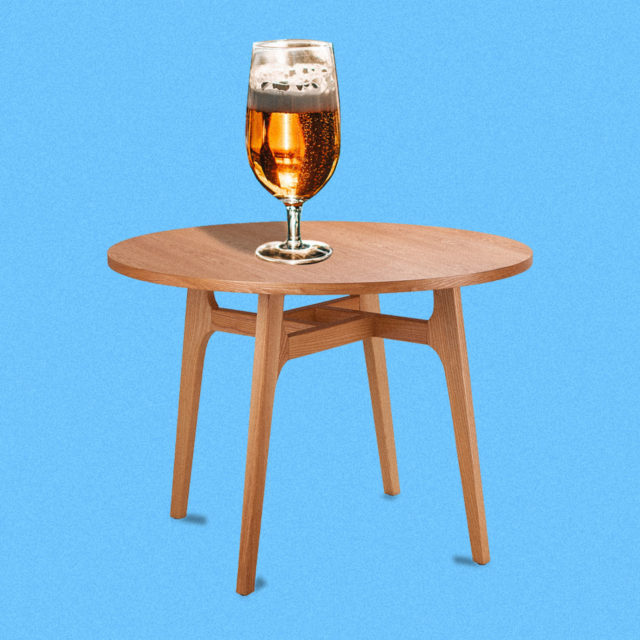In August 2019, Massachusetts nano-brewery Gentile Brewing Co. re-released its American Table Beer, an easy-drinking, Belgian-style pale ale that co-owner Paul Gentile describes as “the beer equivalent of an Arnold Palmer.” The rotational offering “was in concept for nearly three years” before its original launch in May 2019, Gentile says. “Our customers loved it and so did we, so we made it again.”
They’re not alone. Table beers by some of craft beer’s biggest names have been gaining traction nationwide, from Allagash Brewing’s Hoppy Table Beer, to Two Roads Brewing’s Table Terroir, to Tired Hands’ Adaptive Distortion.
Table beers are not a style per se, but an occasion-based beverage. “It’s less in the ingredients and more in the intention,” Allagash writes on its blog.
Don't Miss A Drop
Get the latest in beer, wine, and cocktail culture sent straight to your inbox.That sentiment is echoed throughout the beer community. “Low-ABV crushers, that’s a hill I’ll always die on,” Mathew Dapkins, a.k.a. Massive Beer Reviews, writes VinePair in a direct message. “Set aside the fact that low-ABV, pretty table beers are every bit as delicious as their bigger brethren, more often than not they tend to surround good times and facilitate good conversation.”
“In today’s Instagram/ticker culture, people tend to want the beer they are drinking to take center stage,” Dapkins says. “Great table beer doesn’t mind taking a back seat to, or sharing equal space with, life experiences.”

Table beer, tafelbier, or bière de table all refer to low-alcohol brews that can be enjoyed with or without food, and throughout a lengthy drinking “session.” Unlike table wine, table beers are generally not of lesser quality or expense than other beers. Instead, table beers are meant to be enjoyed one after the other, without getting you “drunk.” While session beers can encompass any style, table beers are most often Belgian-style ales like saisons made with Belgian yeast, house yeast strains, or mixed fermentation cultures, along with such light malts as two-row and pilsner, and a variety of citrus-forward hops.
As with many ancient beer traditions, table beer’s history is somewhat hazy. Most sources credit the style to late-1800s Belgium and France, where table beers (tafelbier in Flemish, or bière de table in French) were consumed at home during family meals and gatherings. Adults and children drank these light, sweet, and barely alcoholic beers — some were as low as 1 to 2 percent ABV, and few exceeded 3.5 percent.
An alternative history suggests table beers originated from an 18th-century English tax, through which beers were classified and fined either as “Strong,” “Table,” or “Small.”
More recently, in the 21st century, Allagash put table beer on the map for many contemporary craft drinkers when it released its Hoppy Table Beer in January 2017. “Inspired by the Belgian tradition of low-ABV, easily drinkable beers,” its dedicated webpage reads, Hoppy Table Beer is a sessionable 4.8 percent ABV and made with Allagash’s two-row malt blend, along with Maris Otter malt, oats, and coriander. It includes Chinook, Cascade, Comet, and Azacca hop additions during the brew, and is dry-hopped with Comet and Azacca hops. It’s also fermented with Allagash’s house yeast.

Allagash’s River Trip, another Belgian-style session ale, can also be considered a table beer. It employs different grains and hops than Hoppy Table Beer, but is similarly light-bodied, hop-forward, and spiced with coriander. It too is 4.8 percent ABV. Perhaps even better suited to the unofficial table beer label is Allagash’s Tiny House, a 3.4 percent ABV Belgian-style ale with subtle malt sweetness and a bitter finish.
Allagash isn’t the only brewery at the table, however. London’s The Kernel Brewery, established in 2009, had “perfected low-alcohol table beers” by 2012, according to Bloomberg, and would go on to create more than 80 iterations of its Table Beer. When Brooklyn’s Threes Brewing debuted in 2014, it did so with Table Beer, a 4.2 percent ABV saison with notes of lemon and wheat. And, since 2015, Jester King Craft Brewery of Austin, Texas, has produced Le Petit Prince, a farmhouse table beer that’s bottle-fermented with mixed culture yeast. Its 2019 variant finished at a dry, 3 percent ABV.
Of course, this being the craft beer world, table beer interpretations vary widely and wildly. Holy Mountain Brewing of Seattle produces a series of table beers that break from tradition by using adjuncts and barrel aging, such as Strawberry Table, Vermouth Gin Table, and Guava Rum Table. In Richmond, Va., The Veil Brewing’s Sauvage Rosé table beer is coolship-cooled, barrel-fermented, and aged in red wine barrels for a year before re-fermenting on second-use raspberries. A 2017 collaboration between 4 Hands Brewing of St. Louis and Narrow Gauge Brewing Company of Florissant, Mo., pushed the limits by naming their beer Table IPA.
Table beers may be easier to enjoy than define. Yet, it’s safe to say all follow the same principle: Take a sip, and stay a while. When gathering with family and friends, “higher-alcohol drinks tend to accelerate the experience,” Gentile says. “When that drink is table beer, you have provided a flavorful beverage for your guests, but also extra time for them to enjoy it.”
“Community-building takes time, and table beer provides that time,” Gentile adds. “We see our taproom as a gathering space for our community. Making this table beer is a natural extension of that vision.”

Five Table Beers to Try
Allagash River Trip
A Belgian-style session ale spiced with coriander and fermented with Allagash’s house yeast. ABV: 4.8 %.
Folksbier Sif
A dry-hopped grisette fermented with Nordic ale yeast. ABV: 4.7%.
Gentile Brewing American Table Beer
A session Belgian-style pale ale dry-hopped with Comet and Teamaker hops. ABV: 4.5 %.
Jester King Le Petit Prince
A farmhouse table beer fermented with Jester King’s own mixed culture. ABV: 3%.
Two Roads Area Two Table Terroir
A Connecticut-grown ale made with local malts and hops, and yeast captured in the brewery hop yard. ABV: 3.7%.
